
McLaren 10 has officially unveiled its latest flagship supercar, the W1, which carries forward the legacy of the iconic McLaren F1 and P1. Building on decades of engineering expertise, the W1 sets a new benchmark for performance, combining McLaren’s race-proven aerodynamics, lightweight construction, and cutting-edge hybrid technology. It is McLaren’s fastest and most powerful road-legal car yet.
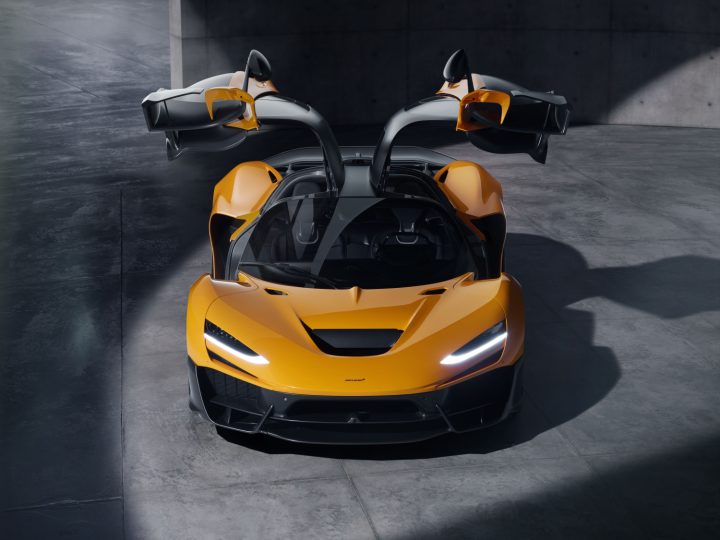
Photo: McLaren
At the heart of the W1 is an all-new High-Performance Hybrid (HPH) powertrain, featuring a 4.0-litre twin-turbocharged MHP-8 V8 engine combined with an E-module electric motor. This setup delivers a combined output of 1275PS (1257 hp) (928PS from the V8 engine and 347PS from the electric motor), propelling the car to unprecedented speeds. The W1 accelerates from 0 to 100km/h in just 2.7 seconds, reaches 200km/h in 5.8 seconds, and hits 300km/h in under 12.7 seconds.

Photo: McLaren
The combination of rear-wheel-drive and McLaren’s Formula 1-derived technologies ensures an engaging driving experience, even at these extreme levels of performance. McLaren’s decision to retain a pure rear-wheel-drive configuration, while many competitors opt for all-wheel-drive, showcases the company’s confidence in its engineering capabilities. The rear-wheel setup not only keeps the car lightweight but also maintains superior driver engagement, a key McLaren trait.
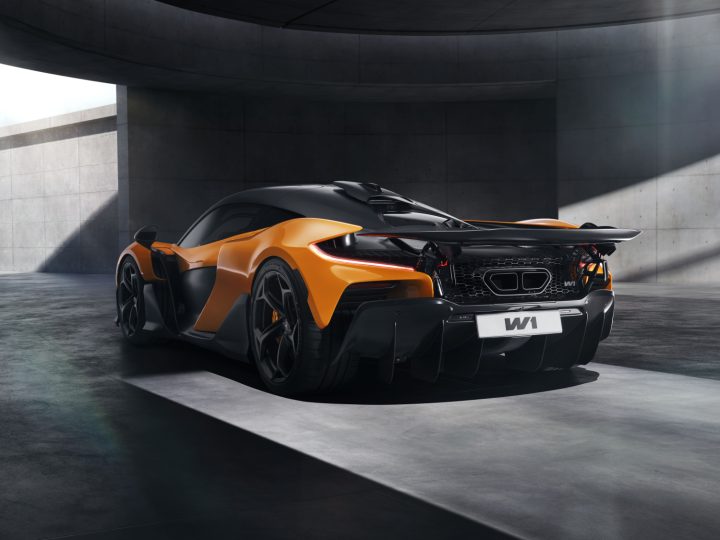
Photo: McLaren
The W1 is designed with state-of-the-art aerodynamics, maximizing downforce while minimizing drag. A unique feature of the W1 is its ability to transition from road to race mode. In race mode, the ride height is lowered by 37mm at the front and 17mm at the rear, and active wings are deployed to enhance stability and grip. The car generates up to 1,000kg of downforce, ensuring exceptional handling even at high speeds.
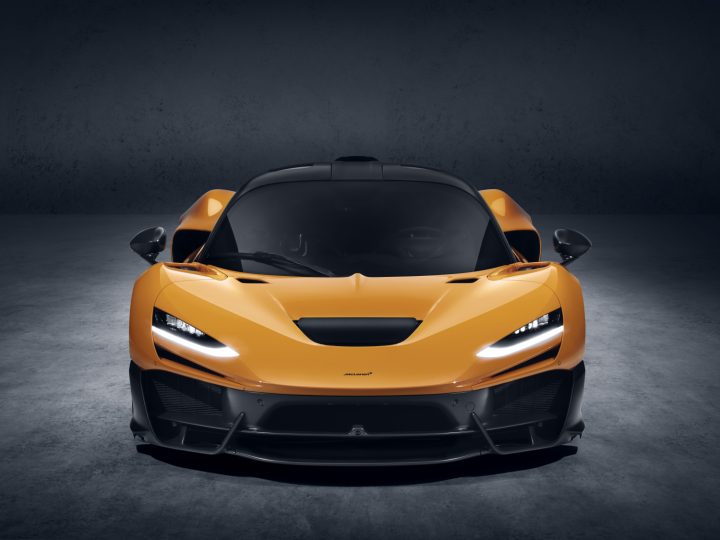
SPhoto: McLaren
A focus on lightweight materials plays a crucial role in the W1’s performance. The car’s dry weight is just 1,399kg, achieved through McLaren’s extensive use of carbon fiber and 3D-printed suspension components. This ultra-light construction contributes to the car’s impressive power-to-weight ratio of 911PS per tonne—an industry-leading figure in the road-legal supercar segment.

Photo: McLaren
The new MHP-8 V8 engine is central to the W1’s performance. The 4.0-litre, twin-turbo unit has been designed from the ground up to work seamlessly with the hybrid system. The engine uses a lightweight aluminum block, cylinder heads, and pistons, while advanced technologies like plasma-sprayed cylinder bores allow the engine to rev up to 9,200rpm. The 350-bar Gasoline Direct Injection system further enhances efficiency and performance.
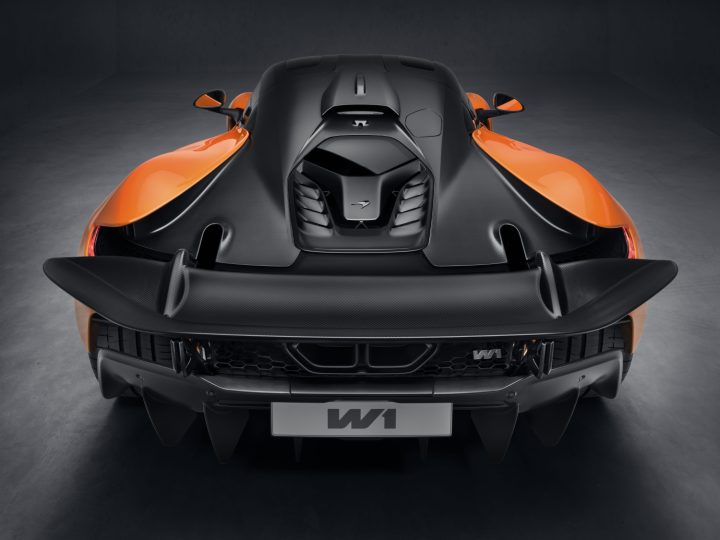
Photo: McLaren
McLaren has incorporated a compact E-module electric motor that generates 347PS and can spin up to 24,000rpm, comparable to Formula 1 E-motors. The motor, along with a 1.384kWh battery, offers enough power for short, zero-emission drives of up to 2km. Although the electric range is limited, the hybrid system significantly boosts overall power and ensures instantaneous throttle response.

Photo: McLaren
The hybrid system’s weight has been reduced by 40kg compared to the McLaren P1, while delivering nearly double the electric power. The W1’s battery is mounted low in the chassis to improve the center of gravity, further enhancing handling.
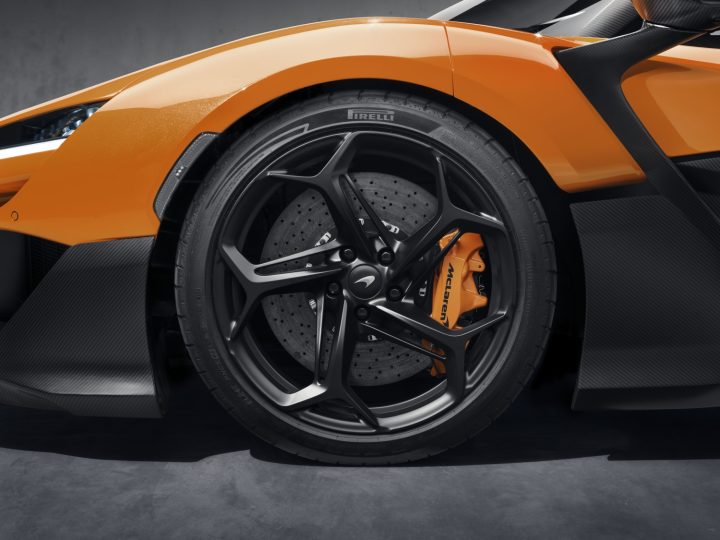
Photo: McLaren
The W1 introduces McLaren’s Race Active Chassis Control III suspension system, which offers a wide range of capabilities, from comfortable road driving to track-focused performance. In Comfort mode, the car delivers a smooth ride, ideal for everyday driving. Sport mode sharpens the car’s responses, while Race mode stiffens the suspension, lowers the ride height, and maximizes aerodynamic performance.
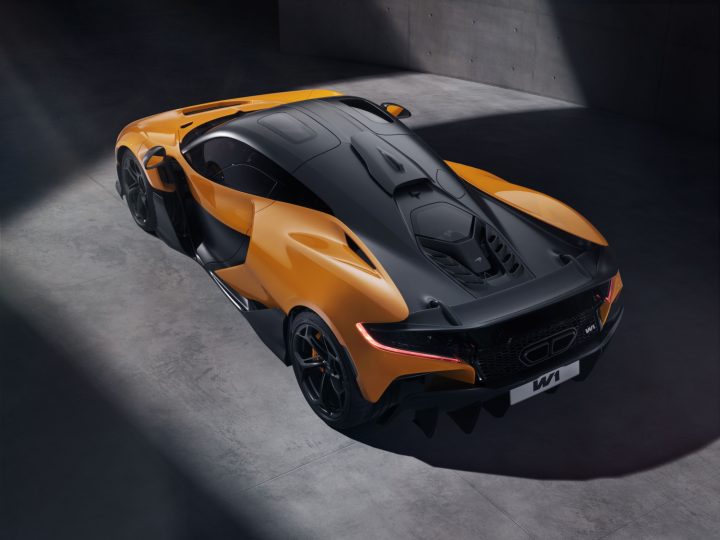
Photo: McLaren
The front suspension includes titanium torsion bars and an active heave element, while the rear uses a Z-bar with active droplinks to control body movement. The advanced suspension setup allows the W1 to manage its massive power while maintaining stability and agility.
The braking system on the W1 has been optimized for both road and track use, providing exceptional stopping power. The McLaren Carbon Ceramic Racing+ (MCCR+) brake system features 390mm discs with a unique ceramic layer for increased durability and braking efficiency. The car can decelerate from 100km/h to a standstill in just 29 meters and from 200km/h in 100 meters.
Although the W1 delivers blistering performance on the track, it is also designed to provide an engaging and comfortable driving experience on public roads. The interior is crafted for the driver, with a focus on ergonomics and visibility, ensuring a connection to the car in all driving situations. The car’s hydraulic steering system, another nod to McLaren’s Formula 1 heritage, provides precise feedback and enhances driver control.
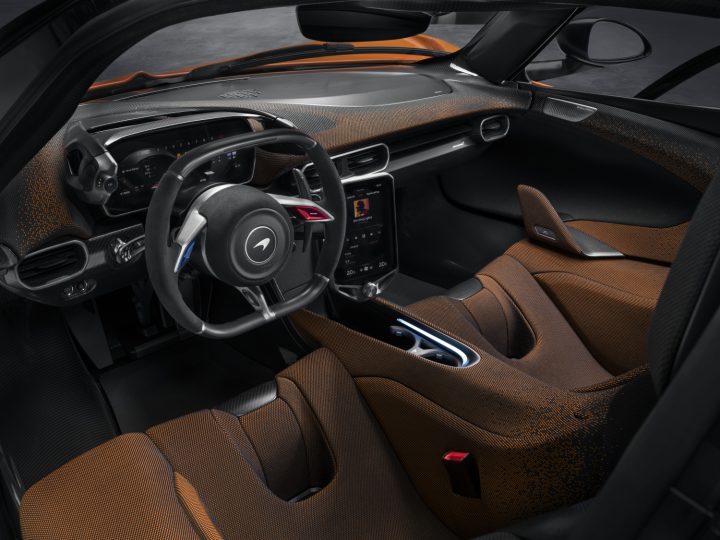
Photo: McLaren

Photo: McLaren
The W1 marks a significant milestone for McLaren, combining its racing expertise with advanced hybrid technology. The car was publicly revealed on October 6, 2024, a date chosen to commemorate the 50th anniversary of McLaren’s first Formula 1 World Championship, won by Emerson Fittipaldi in 1974.

Photo: McLaren
Related: Here is the 2025 McLaren Artura Spider, a 690 HP hybrid top-down supercar
Only 99 units of the W1 will be produced, and all have already been allocated. Each model represents a celebration of McLaren’s World Championship mindset, bringing race-level performance to the road.


